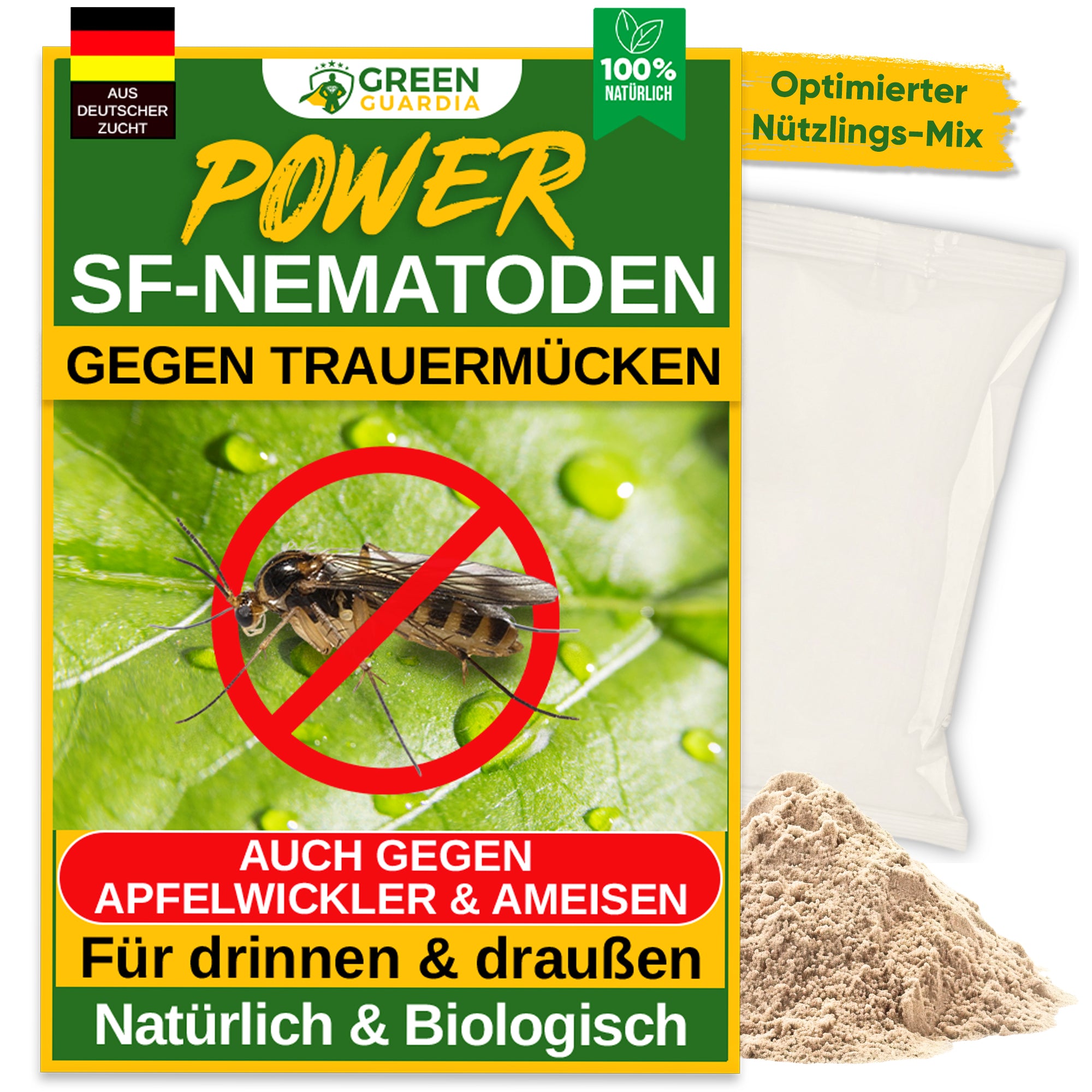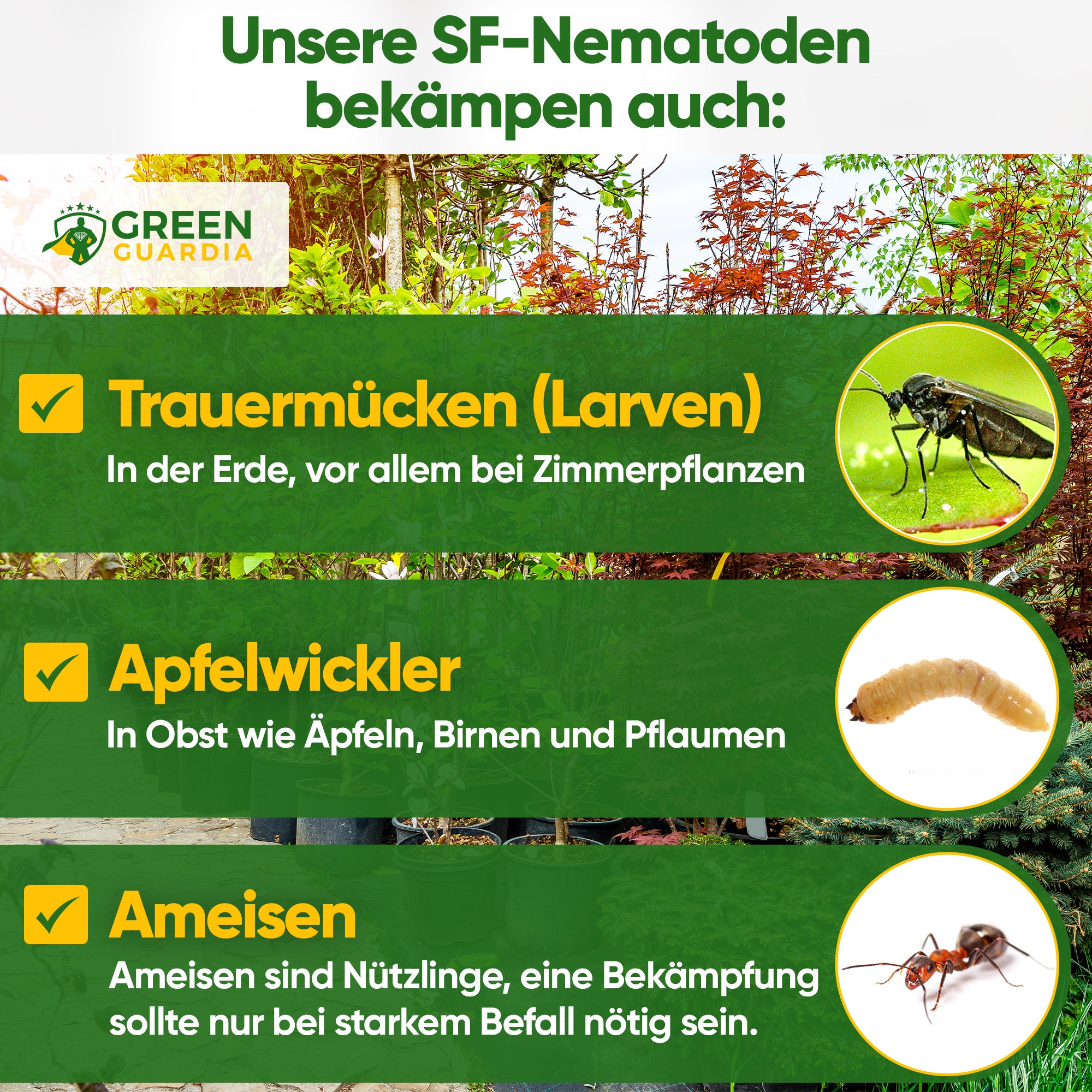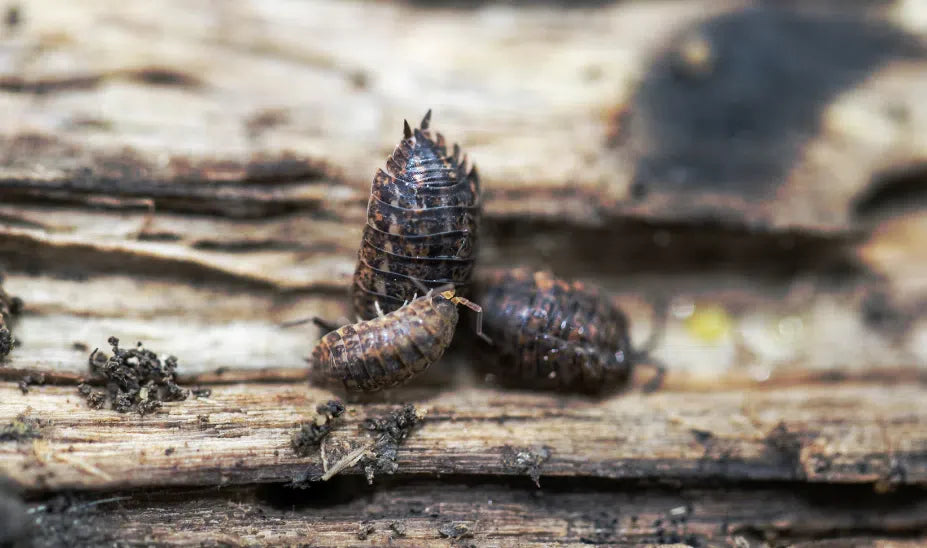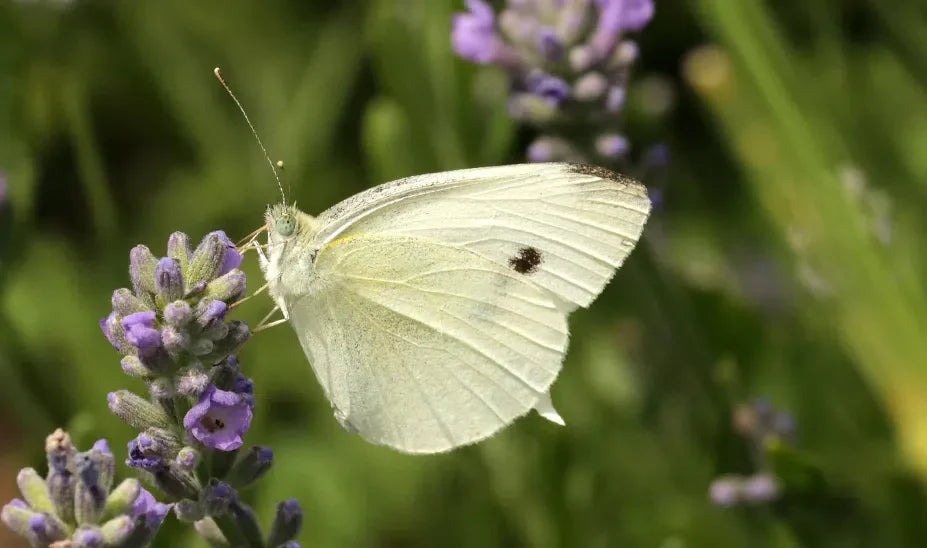Identify and naturally combat pine bushhorn sawfly
The pine bushhorn sawfly (Diprion pini) poses a serious threat to pine trees. Its larvae, in particular, feed on the tree needles, weakening them over time. A severe infestation can cause entire branches or even entire trees to die—especially in monocultures.
In this article, you will learn how to detect an infestation early, combat it in an environmentally friendly way, and protect your trees in the long term.
An overview of the pest
The larvae of the pine bushhorn sawfly devour the needles of young and old pines. Severe infestations can result in complete defoliation. The pest can spread particularly rapidly in plantations or monocultures.
Life cycle of the pine bush sawfly
- Egg laying: Females lay their eggs on the needles of the pine tree.
- Larval stage: The hatched larvae eat the needles bare and thus cause the main damage.
- Pupation: After a few weeks the larvae pupate in the soil.
- Adult wasps: The hatched wasps lay eggs again – the cycle begins again.
To prevent mass reproduction, early intervention is essential.
How to recognize an infestation
- Yellowish or brown needles, often starting at the top or outer part of the tree
- Defoliation – entire needles are missing from the affected branches
- Approximately 20 mm long, greenish larvae clearly visible on the branches
In case of severe infestation, quick action is required to maintain the health of the trees.
Natural methods to combat
Nematodes (Steinernema feltiae)
These microscopic nematodes are highly effective against sawfly larvae. They penetrate the larvae and kill them from the inside out. Simply mix with water and apply to infested areas or the soil – completely chemical-free.
Promote natural predators
Birds, especially tits, enjoy eating the larvae. Setting up nesting boxes can help attract natural predators to the garden or forest.
Mechanical measures
- Early removal and proper disposal of infected needles and branches
- Preventing the spread by cutting back affected areas
Preventive measures
- Regular inspection: Pay particular attention to signs of infestation in spring and summer
- Apply nematodes preventively: In spring and autumn to interrupt the life cycle
- Mixed forests instead of monocultures: Diversity complicates mass reproduction
Products for natural control
In our range you will find effective and natural products for controlling the pine bush sawfly:
- Nematodes (Steinernema feltiae): The proven solution against larvae in the soil or on infested plants
- Mechanical tools: For the targeted removal of infected branches
- Nesting boxes: To support natural predators such as tits
All our products are easy to use, environmentally friendly, and help you keep your pines healthy.
Conclusion
The pine bushhorn sawfly is a dangerous pest—but there's no reason to panic. With natural measures such as the targeted use of nematodes and the promotion of beneficial insects, you can protect your trees without harming the environment.
Act now and ensure strong, healthy pines – sustainably, organically and effectively.











